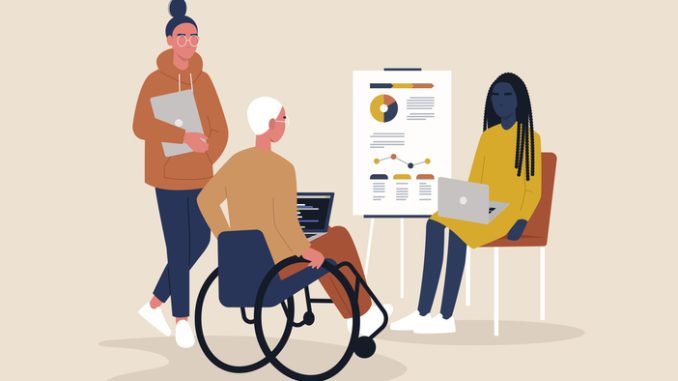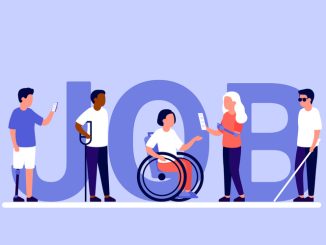In today’s dynamic work landscape, fostering inclusivity is not just a virtue; it’s a legal obligation. The Equality Act 2010 mandates employers to make reasonable adjustments for their disabled staff. Embracing this responsibility not only ensures compliance but also enhances the overall workplace experience and performance of our diverse workforce
CREDIT: This is an edited version of an article that originally appeared on NHS Employers
Physical environment: Beyond accessibility
Creating an accessible physical environment is the cornerstone of inclusivity. From ramps and lifts to accessible toilets and parking, every detail matters. Ensure wide corridors and spacious offices to accommodate all needs. Quiet rooms, dimmer switches, and visual alarms provide essential support for those with sensory sensitivities.
Embracing assistive technology
Technology is a powerful ally in fostering inclusivity. Dictation software, screen readers, and captions/subtitles are indispensable tools. Additionally, screen magnifiers, hearing loops, and task management tools play a crucial role in creating a level playing field for all employees.
Human support
In the spirit of unity, consider human support mechanisms. Palantypists, personal assistants, and work coaches contribute significantly to a supportive workplace. For effective communication, British Sign Language interpreters are invaluable, ensuring that every employee’s voice is heard.
Animal support
Recognising the therapeutic role of animals, guide dogs and hearing dogs offer valuable assistance. Welcoming these furry companions into the workspace not only aids individuals with specific needs but also promotes a compassionate and inclusive atmosphere.
Adaptive working hours
Recognising the diversity of individual needs, flexible working hours can be a game-changer. Whether it’s working pre or post standard hours, from home, or with frequent breaks, tailoring the work environment to individual preferences fosters a healthier work-life balance.
Tailoring workspaces
Investing in ergonomic equipment, including chairs, desks, mouses/keyboards, and monitors, ensures that the workspace is not only accessible but also conducive to the comfort and productivity of every employee.
Diverse communication methods
Communication is at the heart of any thriving workplace. Implementing diverse communication methods such as video calls, phone calls, emails, and using communication devices accommodates different preferences and needs.
Accessible formats: Breaking communication barriers
Breaking down communication barriers is pivotal. Utilise accessible formats such as Braille, clear and organised information, sans-serif fonts, colour contrast, and off-white backgrounds. Large print ensures that information is accessible to everyone, irrespective of their needs.
Organisational commitment: A cultural shift
To truly embrace inclusivity, an organisational commitment is paramount. Conduct training sessions for employees and employers, review policies and job duties, and initiate a cultural shift that celebrates diversity.
Making reasonable adjustments doesn’t have to be a daunting task. Most adjustments cost less than £100, with many requiring only a simple shift in processes or policies. To find out more about workplace adjustments, including the benefits of making adjustments, the costs, how to start implementing adjustments and raising awareness, click here.



Be the first to comment